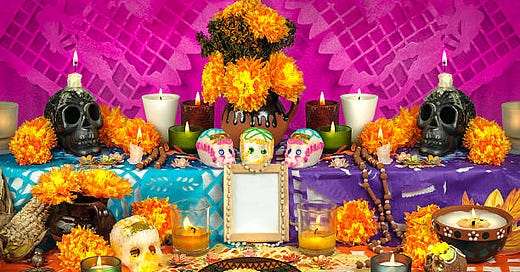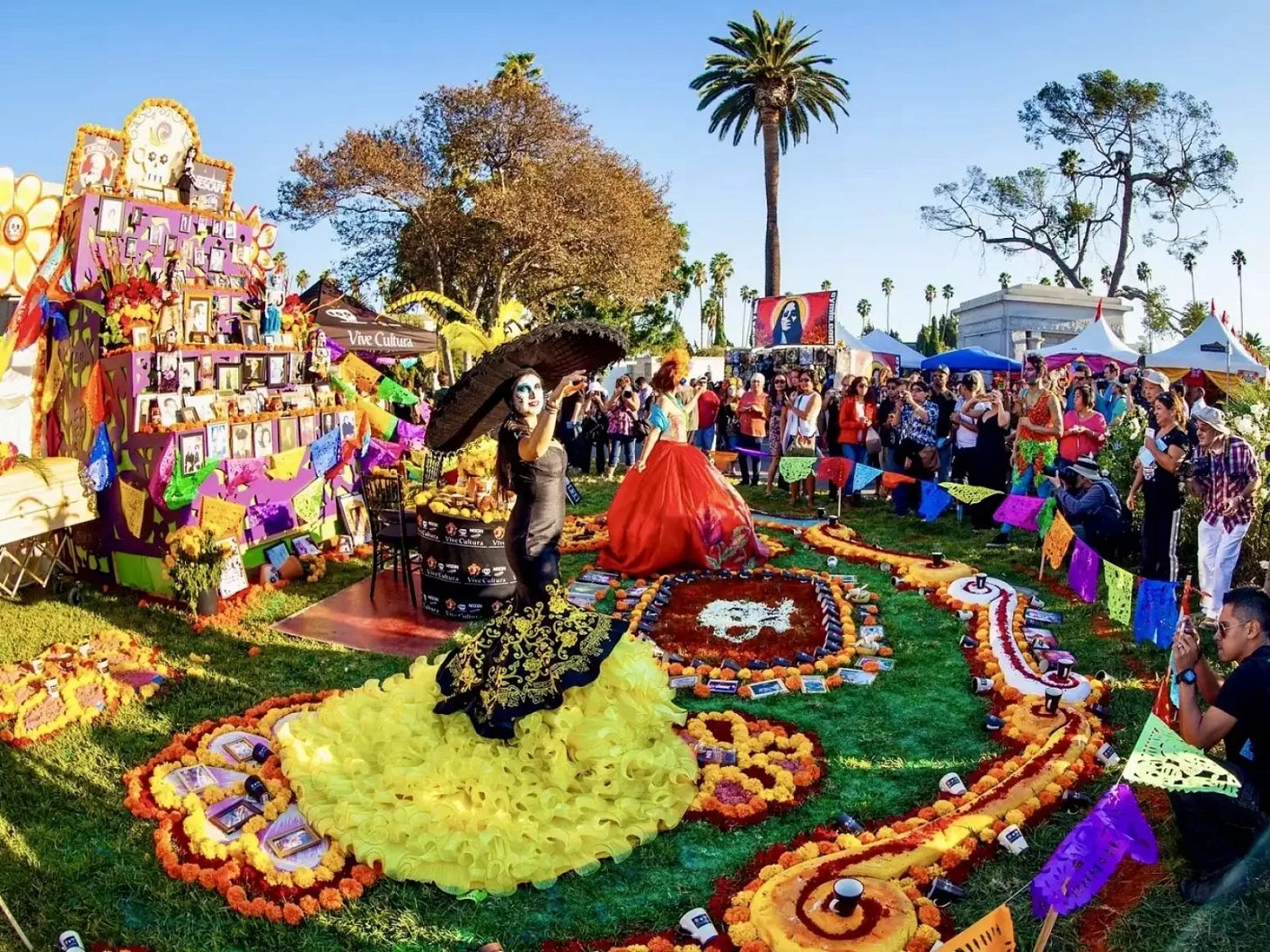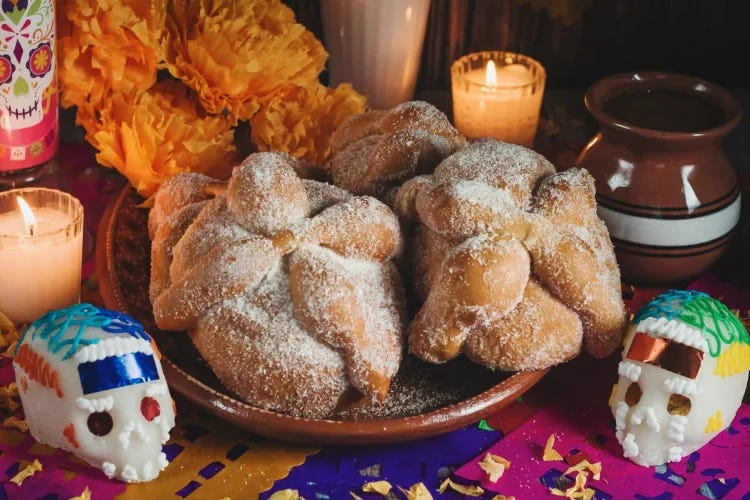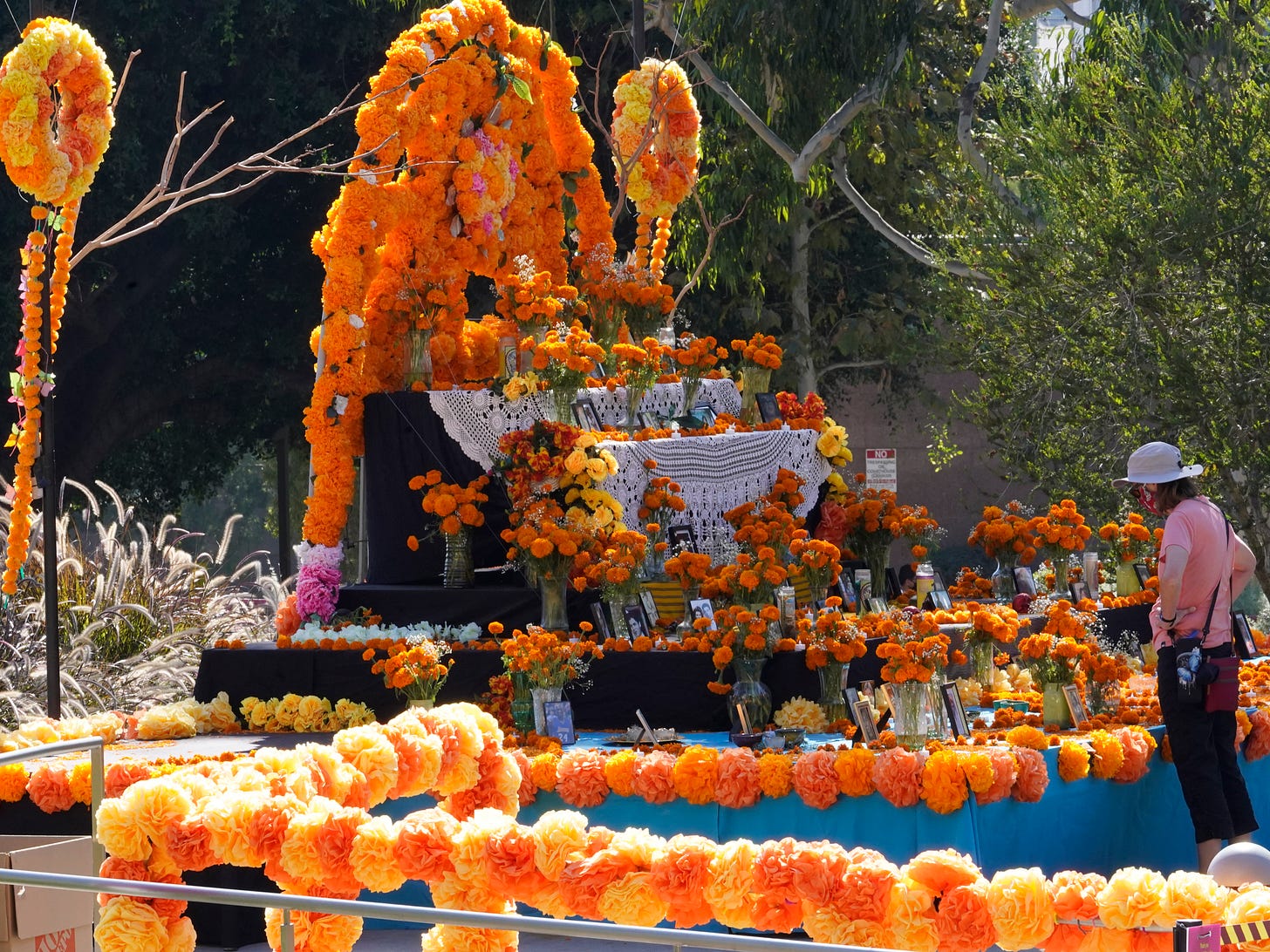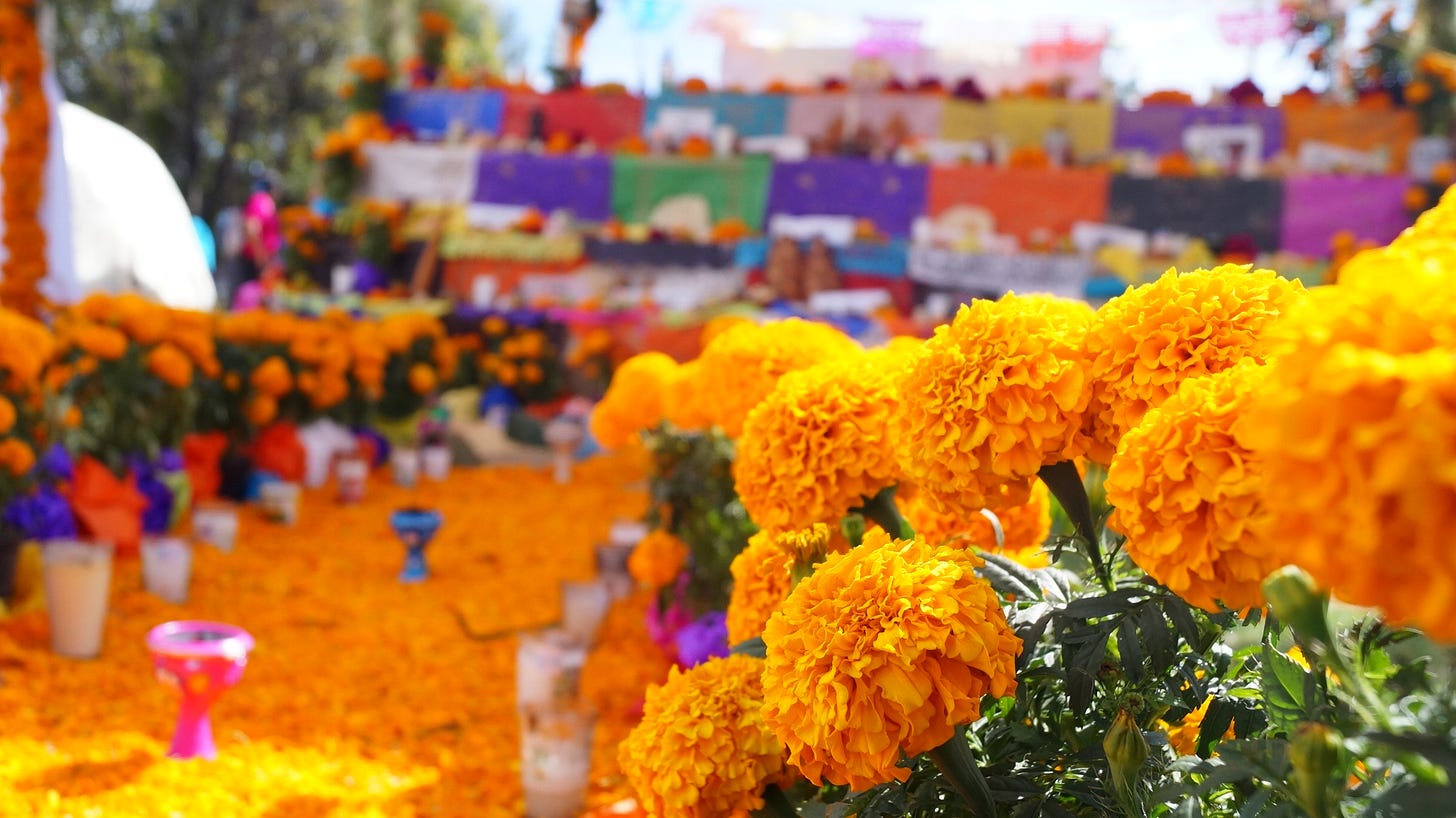Life and death are two experience that unite us all on this planet. I feel extremely lucky as I’ve always had a very good relationship with death. My grandmother passed away a few months before I was born and I truly mean it when I say I feel her with me every day. Although both of my grandmothers have passed, I find a great way to connect with them is through food and their recipes. You can get a sneak peek at some of these recipes here on this week’s newsletter.
Another reason why I feel comfortable with death is because I was lucky enough to be born in LA, a city with a lot of Mexican influence, on Day of the Dead, November 1st.
Día de los Muertos is not a sad day, it’s an extremely joyful, colorful day to celebrate and remember those who have passed. It is part of the UNESCO Representative List of the Intangible Cultural Heritage of Humanity since 2008.
What is Día de los Muertos?
This wonderful holiday is celebrated primarily in Mexico and parts of Latin America on November 1st and/or 2nd - these two dates correlate to the Catholic Holy Days which I’ll discuss further below. It’s a time for family and loved ones to get together and honor relatives and friends that have since moved on. The easiest way to summarize the purpose of this day is to find a way to remember these souls. If they’re remembered, then their souls are not truly dead. It’s a day to welcome back spirits and keep their memory alive.
Does this seem a bit familiar to you? Perhaps you’ve seen the Pixar film Coco!
If you have not… I highly recommend.
When the Spanish arrived to Mexico early 1500s they brought both All Saints and All Souls day to honor important people in Roman Catholicism. At the time, the Aztecs believed that death was still a part of life so they recognized their ancestors more than we would today. When the Spanish realized that the indigenous people also had traditions to honor their dead, they merged them all into the same few days.
Due to my LA roots, I grew up around Day of the Dead, with sugar skulls placed around my school and marigold garlands draped around town. Although the meaning behind the holiday is touching and brilliant for so many ways, visually, Día de los Muertos is also simply FABULOUS. I have always wanted to travel to Mexico during these dates to see all of the personal ofrendas and this celebration of love and remembering take place.
Ofrendas
Ofrendas, offerings, are displays of remembrance for a specific deceased individual. These altars typically have one or three levels: a single table or on three staggered levels representing heaven, earth, and the underworld. There can be more levels for the extreme ofrendas but regardless, all of them have elements to represent water, wind, earth, and fire.
Water - a jug of water
Wind - papel picado, decorative cut-out paper
Earth - food including pan de muertos, bread of the dead
Fire - candles in all four directions, similar to a compass to help souls find their way back
Copal and incense - also very common on an alter as these purify the space to ensure the soul’s journey back is seamless
Ofrendas are both cultural and personal expressions. In addition to the above, individual mementos are left for the specific soul: their favorite foods, their favorite poem, etc. Mine would most definitely include some Dijon mustard and a picture of my dog Tomate.
But how does one choose who the ofrenda is for? Technically, it doesn’t need to be a blood relative at all. It is most common to see recent deceased celebrated and well as close relatives rather than 6th cousins twice removed etc. It is, however, also a way to honor distant relatives in a way to connect with them and feel close to them so no one is off limits! It’s really up to you.
What Do You Eat?
As mentioned prior, sugar skulls or Calaveras, are common ofrenda decorations on Día de los Muertos but they are not to be eaten! Each skull represents a soul and is seen as art rather than candy. Alegrías, however, are made from puffed amaranth seeds stuck together with honey, piloncillo, raisins, and nuts and can be eaten as well as placed on altars.
Pan de Muertos, bread of the dead, is also eaten as long as it’s not the one placed on the ofrenda for the spirit. This bread is a traditional pan dulce, a sweet yeasted bread made with eggs, butter and milk. Think of it as similar to a brioche just usually flavored with some anise seeds and orange zest. The bread is nice and round to symbolize the circle of life and death and you’ll find some extra dough on top arranged to represent a skull, crossbones, and tears.
Tamales, both savory and sweet, are also common foods eaten and placed on altars during this celebration. While there are different explanations for this, I’ve found that a common reason is because they symbolize a connection between the earth, the living, and the dead and also represent family.
Primarily consumed in the Yucatan Peninsula, candied pumpkin called Calabaza en Tacha (or en dulce) are prominent during this holiday. You can find a great video here below on how to prepare the treat. As expected, it’s deliciously sweet, earthy and truly tastes of autumn.
Once said to be the blood of Aztec god Mayahuel, pulque, is also drank over Día de los Muertos. If you’ve never tasted this drink, it’s definitely particular - I’m personally a fan but all of my Mexican friends were quite surprised to learn this. This milky looking, kind of gooey drink is made from the fermented sap of the agave plant. Think boozy kombucha with a punch?
There are so many other traditional foods eaten and drinks drunk of this day but I each becomes more specific depending on region and family so I will stop myself here. Although the list is long, a few include: champurrado (yum), horchata (yum x10000), mole, stole, pozole, flan and more.
The Marigold - flor de los muertos, flower of the dead
Prior to making the connection with Day of the Dead, I had always just thoughts of marigolds as the perfect tomato plant companion (mill Claire speaking). Of course, these bright yellow, joyful flowers that I like to intersperse amongst my tomato plants are the same ones used during this celebration! Their lovely bright yellow color and their strong aroma are used to lead the souls back to earth. The Aztec name for the marigold flower is cempasúchil, which literally translates to "twenty flowers" in Nahuatl.
A fact I learned while writing this newsletter is that these flowers are also mirrored during the Hindu celebration of Diwali - which is celebrated on the same day this year, November 1st. The saffron color symbolizes success and new beginnings, attract prosperity and remove negative energy.
A REALLY WEIRD FUN FACT is that until the James Bond film, Spectre, came out in 2015 there had never been a Día de los Muertos parade in CDMX.
Once the film was released and people loved the striking parade of colorful skeletons, Mexico City launched an annual parade to celebrate starting 2016.
If you celebrate Día de los Muertos, I hope you have a lovely celebration with your family and friends this year. Please let me know if there are any unique traditions that you follow! I love to learn from you all.

